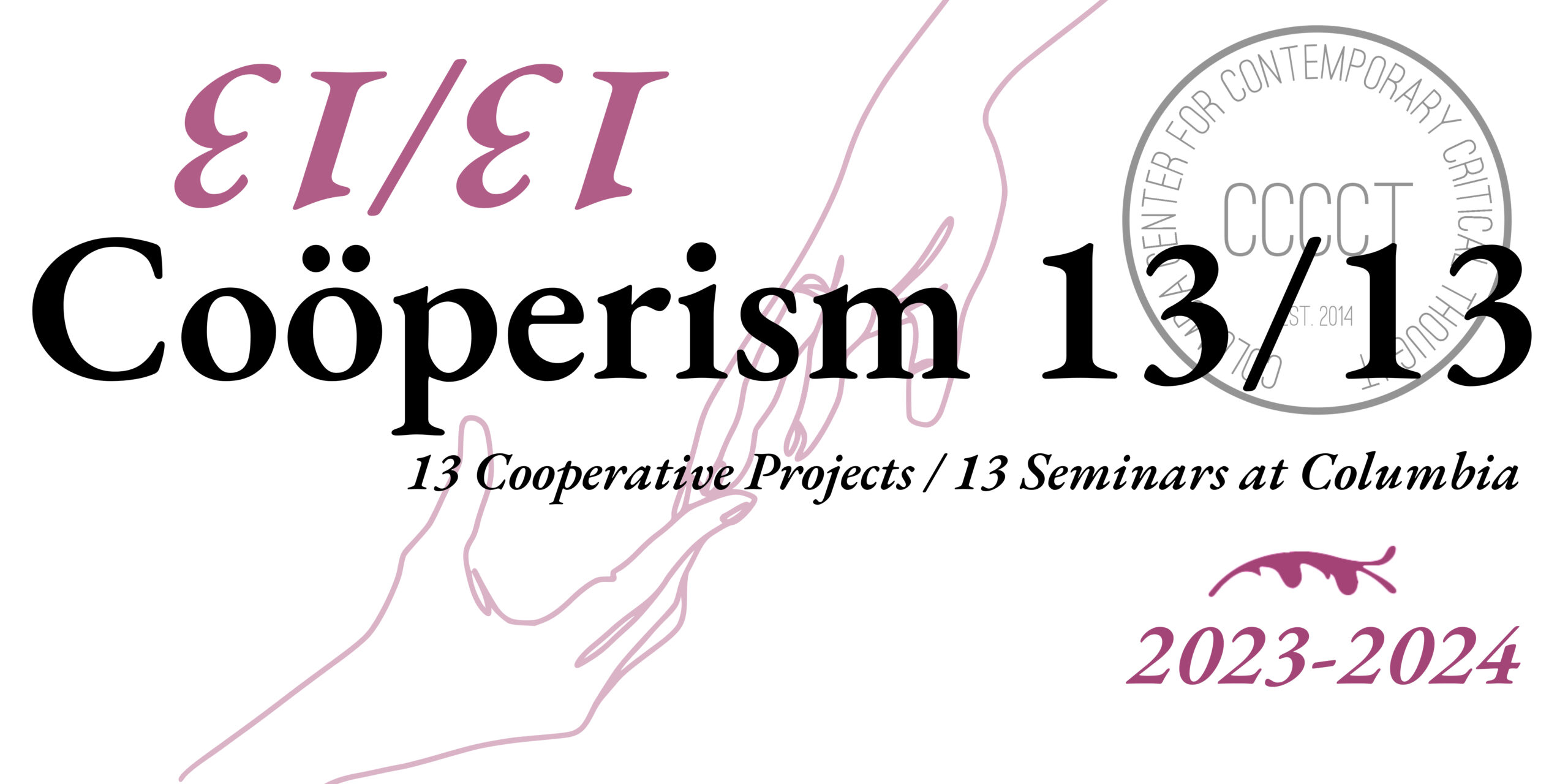By Antonio Pele
Brazil is the fifth largest country in the world and the biggest country in Latin America. It is also one of the world’s most unequal countries regarding income distribution. The wealthiest 10% of the population holds 46% of the country’s income. Brazil also holds one of the highest land concentrations. In the countryside, less than 1% of the landowners control 46% of Brazil’s farmland. Peasants are hardly able to possess their own land and are sometimes forced to work under slavery-like conditions in so-called fazendas and latifundios (very large properties). They are the « sem terra » (without land).
‘Brazil Apart’
This situation comes from Brazilian history with in particular the « sesmarias » (large land grants) that were given to privileged Portuguese families, along with the long-lasting institution of slavery (only abolished in 1888). Over centuries, Brazil’s agrarian priorities were shaped through massive monoculture and export-oriented production.
In this context, actual and progressive land reforms faced major obstacles. It was a potential agrarian reform initiated by the President João Goulard (only applicable to public lands near highways) that triggered the military coup in 1964. During the brutal 21 years of dictatorship from 1964 to 1985 (the longest in Latin America), a so-called « conservative modernization » caused rapid industrialization, the continuous destruction of Brazil’s ecosystem, rural migration, urbanization, and industrialized agriculture. The latter was conceived as the solution to foster food security, and later, as a solution to hunger and bringing « development » to Brazil. Since 1988, and despite the return of democracy, with in particular Lula and Dilma Worker Party governments, agribusiness has kept destroying the Amazon rainforest, and has turned Brazil into the world’s top consumer of pesticide per capita (Carneiro et al., 2015).
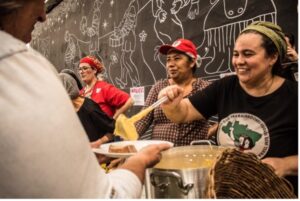
Agrarian Reform Fair (2023). Photo credit: Priscila Ramos
It is important to recognize that, from a strictly rational point of view, there should be no agrarian issue in Brazil. Indeed, only 10% of the land is cultivated in the country. There are also 600,000 km2 of degraded pasture in Brazil (bigger than France for instance) that could be potentially restored. Brazil also holds the largest reserve of arable soil in the world. To put it succinctly, there is space for everyone in Brazil, with industrialized/intensive agriculture, and family/community-based agriculture (Théry, 2015). However, the agrarian issue is omnipresent in Brazil. This paradox, naturally, traces to broader phenomena, as Eduardo Galeano (1971) mentions at the end of the Open Veins of Latin America: « In these lands we are not experiencing the primitive infancy of capitalism but its vicious senility. Underdevelopment isn’t a stage of development, but its consequence. Latin America’s underdevelopment arises from external development, and continues to feed it ».
Context and History
The struggle for land and equal rights in Brazil is historical and structural. Historical, with, for instance, under Portuguese colonization, the political resistance of Zumbi dos Palmares and creation of quilombos(settlements of Afro-Brazilian people). Structural, with the favelas where millions of families intend to work and try to have decent living conditions despite state neglect and violence.
In the case of the Movimento dos Sem Terra (“MST,” the Landless Workers Movement), it is important to recall that the birth of the movement is linked to the previous organizing of the first peasant movements in the 1950’s and the Commissão Pastoral da Terra – The Pastoral Land Commission (CPT), organized by the Brazilian Bishop Conference, in the mid 1970’s. For instance, and through different publications, the Catalan Bishop Pedro Casaldàliga warned the public opinion of the destruction of the rainforest and the need to protect indigenous rights. During the dictatorship, a robust section of the Catholic Church, especially through the Theology of Liberation, has been engaged in a pro-democratic agenda and influenced the MST. This is reflected in the fact that the MST is a non-violent movement. Its members do not carry weapons. It praises friendship and community, and relies on spiritual-political practices, the so-called mística.
The MST emerged in 1984 as a social movement, first in the South of Brazil then as a nationwide movement. With roughly 1.5 million members, it is often described as the largest social movement in Latin America. Following the data available from the MST, it has an estimated 160 rural cooperatives, 190 associations, with 4 credit unions and 140 food processing plants, over 70,000 agricultural settlements, a national university and a network of almost 2,000 primary and secondary schools, more than 450,000 families, and has enabled the redistribution of 88 millions of hectares.

Visit of Lula (2023). Photo credit: Ricardo Stuckert.
In 1993, the MST took part in the creation of La Via Campesina, an organization that describes itself as « the voice of peasants » and an « international movement that brings together almost 200 million peasants, small and medium-size farmers, landless people, women farmers, indigenous people, migrants and agricultural workers from all around the world.” The type of action of the MST is based on political and historical education and formação. The latter has enabled the MST to “respond to external forces and give it internal strength” (Plummer, 2008, p. 4). With the awareness that one is still and will always be a « sem terra » even if they are now able to farm a portion of land in a settlement. The idea is to keep this « sem terra » identity and to help those who do not have anything. MST settlements and larger policies embody a Gramscian counter-hegemonic approach to Brazil’s oligarchic society and status-quo. They aim at creating a « counter-society », with new values and ideas that will challenge eventually the hegemony of Brazilian elites.
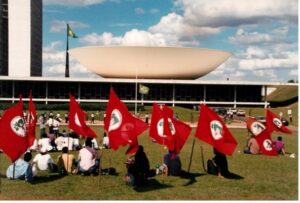
1995 (Brazilian Congress in Brasilia).
“Agrarian Reform By Law or By Any Necessary Means”[1]
The objective of the MST is to organize poor citizens to pressure public authorities into allocating land to agrarian reform settlements for landless families. It uses Constitutional law, the media, negotiation, and co-governance with federal authorities.
The 1988 Constitution embraces agrarian reform and defines property rights by their social function. The MST insists on the primacy of the Constitutional Clause, notably Article 186, which stipulates that in order to be accorded legal protection, property must also fulfill its “social function.” It is under this Constitutional Clause and other laws, the MST occupies lands and seeks legal titles. According to the 1985 Agrarian Reform Law, it is possible to declare « of social interest » and to expropriate a farmland which is not farmed productively. This law is enforced only through direct action. The MST also occupies State and Federal public fallow lands from which it anticipates it will not be evicted.
Many judges keep on applying the Civil Code’s approach to property rights. This strict legal orthodoxy can criminalize MST members. However, in a very important victory for MST activists, Brazil’s supreme court ruled in 1996 that land occupations that aim at hastening reforms are “substantially distinct” from criminal acts against property.
Occupation are strategically planned, involving between 250 and 3,000 families, that will, through nonviolence, build an assentamento (settlement) on the expropriated land. They face the possibility of eviction from the police, but also, and in many cases, death threats and violence from the landowners.
With each occupation, an investigation is usually undertaken by the Institute of Colonization and Agrarian Reform (INCRA) to define whether the property can potentially be expropriated. If the owner does not agree with the amount of the compensation, they can go to court to challenge the expropriation. « The occupation per se is illegal, but [MST occupiers] can accurately claim that their aim is to secure enforcement of the law which provides for expropriation of the property » (Hammond, 1999, 475). As a matter of fact, along with direct actions and occupations, the MST has developed complex and sophisticated legal strategies and discourse, challenging Brazil’s legal conservatism (Mészáros, 2015). In any case, the MST strategy, inside and outside the legal sphere, could easily be understood through the framework of Foucault’s notion of illegalism, by showing how law itself is a terrain of struggle in which MST power relations are connected to the definition of the boundaries of legality and illegality in the matter of property rights.
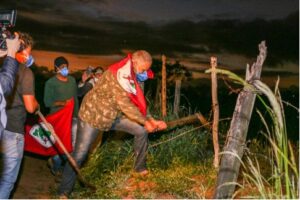
Settlement Occupation of Cícero Guedes, Rio de Janeiro (2021). Photo credit: Tarcisio Nascimento.
MST Coöperism
“[C]ooperation is a basic principle, that is daily put into practice” (a cooperação é um principio elementar, exercitado cotidianamente) reads the MST presentation.
Among its different features, coöperism implies “taking the most promising forms of cooperation, those that are most true to the values and principles, and agglomerates them to create an integrated political, economic and social whole, that can displace the existing framework” (Harcourt, 2023, p. 23).
During 40 years, the MST has succeeded in building a framework for “promoting mutual welfare, health, environment, etc.” (Harcourt, 2023, p. 26). The cooperative structure is at the core of the organizational logic of the MST. It is organized around three activities: 1) political representation (National Meeting, National Congress, State Meeting, local nuclei, etc.); 2) task teams (Finance Sector, Health Sector, Education Sector, etc.); and 3) formal organizations. The latter comprise the National Association for Agricultural Cooperation (ANCA), the Confederation of Agrarian Reform Cooperatives of Brazil (CONCRAB), the Confederation of Agrarian Reform Cooperatives of Brazil (ITERRA), and the the Florestan Fernandes National School (ENFF).
The first two spheres of activity rely on previous peasant movements and, based on collective decision making, have fostered the different MST’s struggles. The third one represents the MST’s development policies. These associations are legally registered, they hold bank accounts and provide funding for several development initiatives. They allow the MST to support peasant farming, foster technical education, political training, and other skills among the members. For instance, and through the Brazil’s Federal program PRONERA, in partnerships with 94 teaching centers and universities, MST has enabled the access to (higher) education for almost 200,000 young adults.
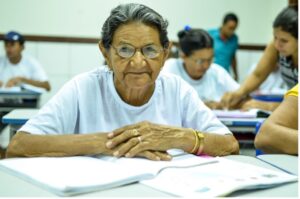
Basic Education for Adults (2021). Photo credit: Juliana Adriano.
Along with coöperism, MST also embodies a novel form of power, namely, coöpower. As Bernard E. Harcourt explains, coöpower relies on the basic idea that the « whole is greater than the sum of the parts » (2023, p.200). It stems from « the strength of the values and principles at the heart of cooperation: participatory democracy, equity in the distribution of wealth, care for all the stakeholders, solidarity, sustainability, and concern for the working environment » (2023, p.22). There is no doubt the cooperation-structure and objectives of the MST embody a novel form of coöpower. Following Diniz and Gilbert (2013, pp. 25-31), it is possible to explain it at different levels.
In the settlements, through small and medium scale collective associations that usually rely on the family and camponês (peasant) ways of living and working, the MST has developed flexible settlement forms of cooperation. The settlement association is the governing body of the settlement. This association functions as a participatory “cooperation democracy” and is responsible for making the collective decisions. It decides over the internal policies and structures, the project of the settlement, and the management of the common property. It is the settlement association that owns legal title of the property. Larger settlements are organized through núcleos (local nuclei) units of roughly 10 families.
The settlement association can decide to adopt one to three modes of property rights, or a combination of them. The settlement can function as 1) a full cooperative; 2) it can be parceled, and families are assigned and farm their own lots (they do not own the latter); or 3) it can be unparcelled, with families being assigned to farm specific sections of the settlement.
Another level of coöpower is related to the housing mode of living. The so-called agrovila organizes the collective structure of habitation. In the settlements, homes are grouped together and not spread far away from one another. The agrovila intends to foster « cooperative communities of families ». Collective infrastructures are built around the agrovilas, like schools and health care centers.
When settlements are very large, and agrovilas hardly possible, the so-called « nucleos de base », are created through which different families are encouraged to engage in cooperative works.
A third level of coöpower stems from cooperative informal and formal work. Mutirão is often used in Brazil to describe voluntary and collective work during a short period of time. It is especially used in the MST settlements to refer to the collective, informal, voluntary work of the members. This informal cooperation can be applied to the collective work on the so called « terra solta » (the land that is used collectively), or when a member of MST settlement needs support from the rest of the community. Mutirão is therefore described as the « most straightforward of forms of camponês cooperation » (Diniz & Gilbert, 2013, p.28).
A fourth level of coöpower can be appreciated in the MST service cooperatives. The MST has successfully implemented service cooperatives related to some specific dimensions of the production, namely, credits, seeds, machines, loans, marketing, education, etc. The MST agro-industry is wide and diverse. It includes the production and distribution of milk, honey, fruit, vegetables, coffees, and are produced under MST brands such as Sabor do Campo, Terra Viva, and Paladar. In 2022-2023, MST produced more than 16,000 tons of organic rice and 37 millions liter of milk per month.
In the title of this piece, I suggest MST coöpower is radical. Indeed, its radicality, comes from many reasons.
First, its radicality comes from the magnitude of the different combinations of forms of cooperation (production and distribution of products, for instance) and the magnitude of different ways to leverage cooperation. For instance, the MST operates its finances and has successfully raised in 2021, R$42 million (US$ 8 million) to fund agricultural cooperatives.
Second, MST’s radical coöpower is a symmetric response to the degree of violence, precarity, and injustice that millions of Brazilian are suffering. I have described it as a « necro-counterrevolution » that targets the most vulnerable population in the country (Pele & Baldessar, 2023).
Third, MST’s radical coöpower succeeds in displacing this prevailing « necro-counterrevolution » in Brazil by struggling for agrarian reform, providing novel policies and strategies to reduce and mitigate long-lasting social injustice. The MST embodies a movement that turns the ideals of radical and “cooperation democracy” possible and actual in Brazil. Its specter “haunts Brazil’s secular inequities ». It represents a struggle to achieve equal rights and full citizenship for everyone (Carter, 2015, p. 7 & 407).
Fourth, MST’s radical coöpower reveals the need to re-evaluate our critical standards when we examine people who face severe hardships of precarious existence. We should be careful not to mistakenly interpret their existence in the way they are treated by authorities (e.g « bare life » in the agambenian vein). To the contrary, and especially in the case of MST members and occupiers, they refuse to have their existence reduced to its most basic expression (see Fassin, 2018). As many others movements and organizations across Latin American, they preserve and build their own communal dignity resisting structural violence, and state neglect.
Fifth and finally, MST’s radical coöpower is engaged in fighting the climate crisis and the preservation of the environment, through the promotion of agro-ecology in its settlements and cooperatives (Lagier, 2020). Since the 1990s, the MST has initiated a “green turn” advocating the adoption of “agroecological” methods in its settlements. Even if some issues still persist around this strategy, it reveals clearly that the “welfare of the environment” (Harcourt, 2023, p. 30) is at the core of MST’s radical coöpower.
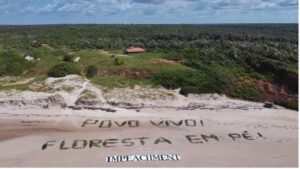
“The People is Alive/ The Forest is still Standing.” Photo credit: @eduardomoura94.
Notes
[1] « Reforma agraria na Lei o na marra » was the slogan of the first Congress of Rural Workers in Brazil (1961). See http://memorialdademocracia.com.br/card/reforma-agraria-na-lei-ou-na-marra
References
Carneiro, Fernando Ferreira, Lia Giraldo da Silva Augusto, Raquel Maria Rigotto, Karen Friedrich and André Campos Búrigo (Ed.), Dossier ABRASCO: Um alerta sobre os impactos dos agrotóxicos na saúde. Rio de Janeiro: EPSV; 2015. Available here
Carter, Miguel (ed.). Challenging Social Inequality. The Landless Rural Workers Movement and Agrarian Reform in Brazil, Duke University Press: 2015.
Théry, Hervé, Le Brésil pays émergé ? Paris : Armand Collin, 2015.
Fassin, Didier, Life. A critical User’s Manual, New-York: Polity, 2018.
Galleano, Eduardo, Open Veins of Latin America, trans. Cedric Belfrage, London: Latin American Bureau 1997 [1971]. Available here
Hammond, John L. “Law and Disorder: The Brazilian Landless Farmworkers’ Movement.” Bull. Latin Am. Res., Vol. 18, No. 4, pp. 469-489, 1999.
Harcourt, Bernard E. Cooperation: A Political, Economic, and Social Theory. New York: Columbia University Press, 2023.
Lagier, Claire, Constructing legitimacy? Agroecology within and beyond the Brazilian Landless Workers’ Movement, Ph.D Thesis, Ludwig-Maximilians-Universität, Munich, 2020. Available here
Mészáros, George, Social Movements, Law and the Politics of Land Reform. Lessons from Brazil. London: Routledge, 2015.
Pele, Antonio & Baldessar Natália, ‘Police Violence in Brazil: Necropolitics and Counterrevolution,’ In Towards AntiPolicing: Prefiguring Possibilities Beyond Thin Blue Line. Edited by S. Springer & R. J. White. London: Rowman & Littlefield (In Press/2023)
Plummer, Dawn, M. Leadership Development and Formação in Brazil’s Landless Workers Movement (MST), Master Thesis, The City University of New York, 2008. Available here.
Sales Diniz, Aldiva and Gilbert, Bruce. “Socialist Values and Cooperation in Brazil’s Landless Rural Workers’ Movement.” Latin American Perspectives, Issue 191, Vol. 40 No. 4, July 2013 19-34.
